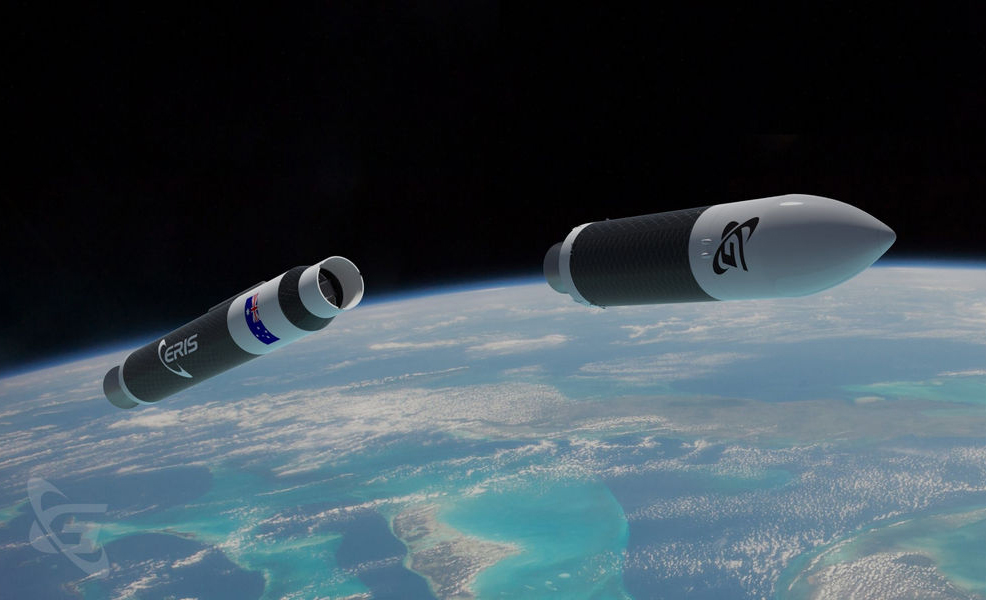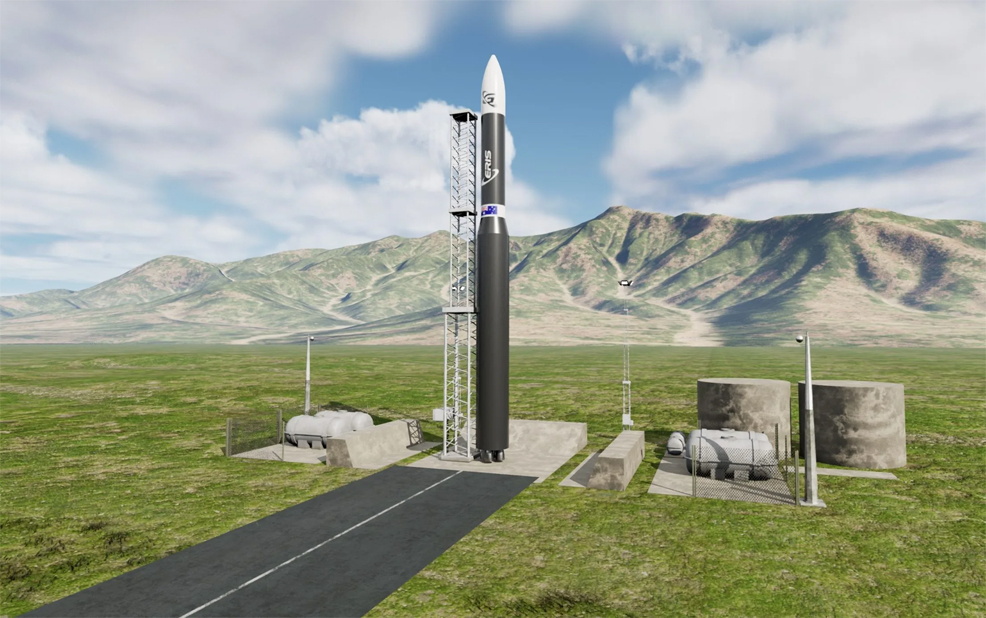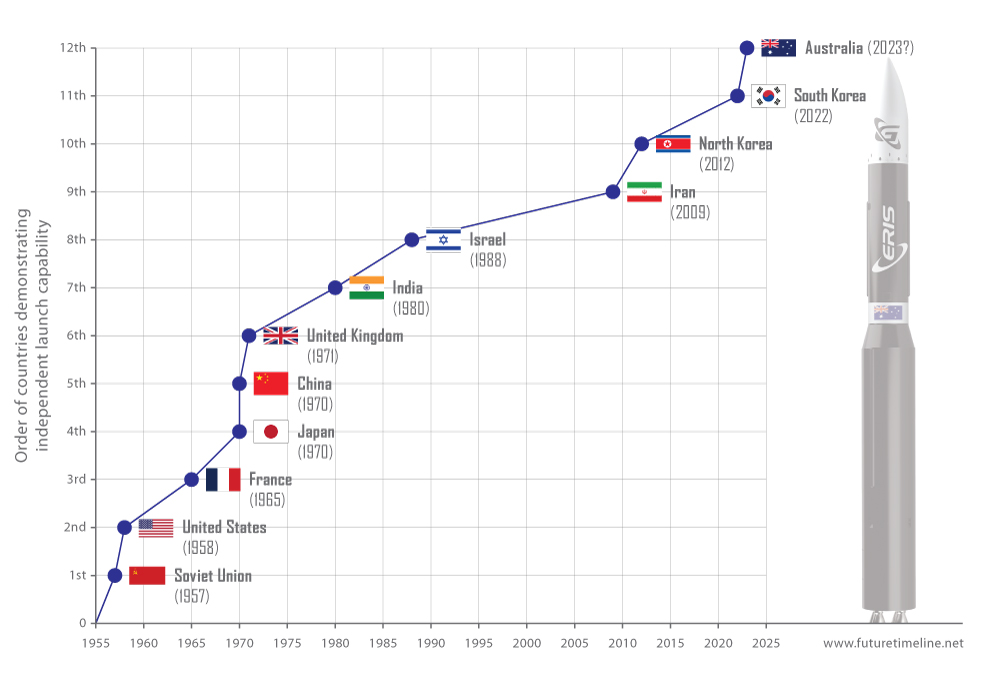
26th November 2022 Australia's first rocket planned for 2023 A company called Gilmour Space is developing a new rocket, Eris, which could become the first Australian-made spacecraft to reach orbit.
Founded in 2012, Australian company Gilmour Space is working on hybrid-engine rockets and associated technologies to support the development of low-cost space launch vehicles. A hybrid-propellant rocket is one with a motor that uses propellants in two different phases: one solid, the other gas or liquid. This can avoid some disadvantages of pure solid rockets, like the dangers of propellant handling, while also avoiding some disadvantages of pure liquid rockets, such as their mechanical complexity. It also has the potential to be cheaper and with lower environmental impact. In 2016, Gilmour Space launched its first hybrid rocket, the prototype "Reusable Ascent SeparaTion Article" (RASTA). This included a world-first use of 3D printed rocket fuel. The tiny, sub-orbital rocket achieved a flight time of 90 seconds, reaching an altitude of 5,000 metres (16,400 ft). Since then, the company has raised $132 million and is now working on a larger rocket, designed to reach low Earth orbit (LEO). This latest project is called Eris and consists of a three-stage launch vehicle with payload capacity of up to 305 kg (672 lbs).
The "Sirius" engine has undergone static test firings on several occasions during the last five years, beginning with a first/second stage burn that achieved a thrust of 75 kilonewtons (kN) for 12 seconds. This month, Gilmour announced the completion of its final ground test, which generated a record 115 kN of stable and efficient combustion, lasting for more than 100 seconds. Sirius is the most powerful rocket engine ever developed in Australia. All five engines are now qualified for an orbital test launch, currently slated for April 2023. "We're confident it will take off the pad, but no first launch vehicle from a new company has ever successfully gone to space on the first try," said co-founder and CEO Adam Gilmour. "What generally happens is the second one works, so we're building two of them so we can learn from the first and succeed with the second." Initially, the company will focus on the small satellite market. It has recently secured clients including Australia's Department of Defence – with whom it will work to develop and launch a new sovereign surveillance satellite – as well as Commercial Space Technologies Ltd (CST), with whom it signed an agreement in August. At only 25 m (82 ft), Eris will be relatively modest in height and similar to the Falcon 1 developed by SpaceX from 2006-2009. The latter stood 21 m (69 ft) tall and took four attempts to reach LEO, eventually being succeeded by the much larger Falcon 9 that is 70 m (230 ft). For comparison, the Saturn V rocket that carried astronauts to the Moon was 110.6 m (363 ft).
However, Gilmour plans to more than triple the payload capacity of Eris to 1,000 kg (2,205 lbs) by 2024. This Block 2 version could then be followed by a rocket able to take astronauts into orbit, perhaps during the second half of the 2020s. To date, only a handful of countries have developed an independent launch capability. If all goes according to plan, Gilmour Space could enable Australia to become the 12th member of the club able to put its own rockets into space. "We've been using other countries' rockets for the last 50 years, but there are a lot of restrictions," explained Gilmour. "If you've got an Australian launch vehicle, then if you're an Australian company or the government, you've basically got unfettered access." "Australia's geographical advantages and political stability make us an attractive destination for launch activities," said Aude Vignelles, Chief Technology Officer of the Australian Space Agency.
Comments »
If you enjoyed this article, please consider sharing it:
|









